BLACK BOX – IDENTITY WEEK
Show times 10:00 | 11:30 | 13:00 | 14:30 | 16:00
Total Running Time: 1 hour 30 minutes
Does identity begin with the body? What role does genetics play in understanding who we are? How has technology changed our sense of identity?
In IDENTITY week, we look at the relationships between mind, body and society in exploring who we are.
In IDENTITY week, we explore how science and art engage with the body and with our sense of self. In IDENTITY I we ask whether there is room for identity in understanding and treating patients through Borland’s Answering Anatomy and SimWoman, The Unsolved Case by Marianne Wilde and an excerpt from Beverley Hood’s Eidolon. In IDENTITY II, we focus on genetic identity and consent through excerpts from stage performance of HeLa by Adura Onashile and post-show discussion. The question of who owns our genetic identity continues with Aleks Cicha’s Bioflaneur, Heather Dewey-Hagborg’s DNA Spoofing and Alexey Marfin’s Blue Eyed Me. In IDENTITY III the loss of identity is explored, through a filmic account of Alzheimer’s Disease in Interrupt Cycle, the detached technological body in Beverley Hood’s Madame I, Daksha Patel’s All of A Sudden Something Popped and Lilian Mehrel’s, Air (verb). IDENTITY IV then asserts identity through embracing the limitations of the body in Nicholas McCarthy’s Me and My Left Hand, performance artist Stelarc’s, The Body is Obsolete and an empowering dance sequence from bionic artist, Viktoria Modesta in Prototype.
CONTENT GUIDANCE:
Some films contain scenes of a medical, surgical or physical nature*, or occasional strong language** that some viewers may find uncomfortable. Whilst there is no age specific content guidance, and viewing of all films is at the discretion of parents, we have deemed content suitable for age 12+
IDENTITY I

Answering Anatomy (2018)
Christine Borland
06:16
www.nationalgalleries.org/art-and-artists/artists/christine-borland
In this short documentary, contemporary artist Christine Borland discusses her practice and the significance of understanding where her working materials come from, how the history of an object can influence its identity and the importance of ethical working practices. Poetic and empathic insights are key to the effectiveness of Borland’s practice and its relevance to the medical humanities, visual art research and medical students’ training. Her work takes place in a context of intensive interest in reciprocity and conversation as well as expert exchange between the fields of Medicine and Contemporary Arts.

SimWoman (2010)
Christine Borland
10:00
www.cnos.org.uk/christine-borland
In SimWoman, we are given the time and space to consider gender and identity in the context of the medicalised body. Borland’s slow scanning gaze across the wax cast of the female human form, every pore of the skin visible, is juxtaposed with the awkward noise and movement of the technological breathing apparatus of a hospital training manikin. The work completes a trilogy following the use of similar manikins in the works SimMan and SimBaby; casting Borland’s own body to apply to the torso of the male manikin was necessary as no existing female training model existed at the time.

The Unsolved Case, 2012
Marianne Wilde
01:00
www.cnos.org.uk/marianne-wilde
This short film employs medical technology as point of reference to the mysteries of medical science, where identity can help lead to diagnosis. MRI scans form the basis to explore, through contemporary arts practice, the visualisation of disease and to examine how and what we ‘see’ when looking at these medical images. The film takes its name, The Unsolved Case (Der ungelöste Fall), from a panel of medical experts who use diagnostic tools and patient case histories to attempt to find a diagnosis for as yet ‘unsolved’ medical cases.
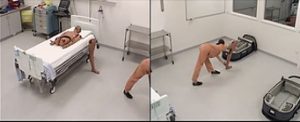
Eidolon – Mani (Dance), 2016
Beverley Hood
04:00
www.eca.ed.ac.uk/profile/beverley-hood
Mani (Dance) is an excerpt from Eidolon, an interdisciplinary performance project by artist Beverley Hood that explores the relationship between the body and technology, and the effect technology has on our perception of what it means to be human and alive. The project was developed at the Scottish Centre for Simulation and Clinical Human Factors (SCSCHF) at the Forth Valley Royal Hospital, Larbert, and is supported by a Wellcome Trust Arts Award, Creative Scotland and the University of Edinburgh.
IDENTITY II
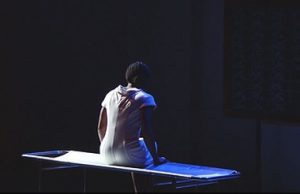
HeLa (2014) (edited excerpts from original one-hour performance)
Adura Onashile
10:39
HeLa Post-Performance Discussion (2014) (edited excerpts)
with Adura Onashile, Prof. Christine Borland and Prof. Volker Straub
16:25
Excerpts from Adura Onashile’s mesmerising one-hour performance HeLa, at BALTIC CCA in 2015. Based on Rebecca Skloot’s novel, The Immortal Life of Henrietta Lacks, HeLa recounts the enduring life of the young black mother, Henrietta Lacks, who died in 1951 of cervical cancer. Lacks’ cells, originally taken without her consent, are still grown and used for research in labs all over the world today. Onashile’s performance asks us to question whether we can separate our genetic identity from our emotional and spiritual heritage. The performance was followed by a live discussion between Adura Onashile and Professor Volker Straub of the Institute of Genetic Medicine hosted by Professor Christine Borland of The Cultural Negotiation of Science.
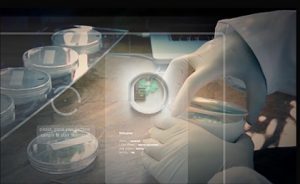
BioFlaneur (2014)
Aleks Cicha
02:25
BioFlaneur tackles the topic of personal bio-privacy in the era of big data, social networking and hackers. Offering a futuristic equivalent of the 19th century dandy, this short film speculates on how the science behind the Human Microbiome Project – a project that aims to reveal the myriad microbial communities that live on and inside our bodies – might ultimately impact our personal online privacy.

DNA Spoofing (2013)
Heather Dewey-Hagborg
03:46
Artist Heather Dewey-Hagborg’s project DNA Spoofing provides a DIY response to attacks on our bio-privacy. As humans, we are constantly shedding genetic material in public space. It is becoming increasingly common to use those traces for surveillance and reconstruction. Just as ‘IP spoofing’ makes anonymous internet browsing possible, DNA spoofing extends that potential by scrambling genetic material, enabling anonymous physical trajectories in tandem with the digital.
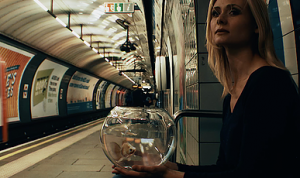
Blue-Eyed Me (2015)
Alexey Marfin
07:00
Blue-Eyed Me provokes questions around the commodification of identity in the age of social media. Like a social media profile or an online shopping list tailored to our hobbies, Marfin’s vision presents genetically modified pets, engineered to look like their owners, forcing us to question where identity resides in a post-personal economy.
IDENTITY III
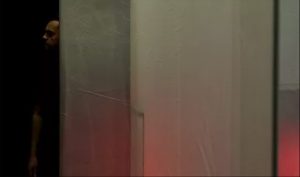
Interrupt Cycle: Exhausting the Scenario (2016)
Matthew Pickering
05:14
Filmed in a shifting labyrinth of translucent corridors, a surreal interpretation of the corridors found in domestic environments and in hospitals, Interrupt Cycle follows a man’s repeating journey through this constructed space as he attempts to position himself within his environment. The exhaustive narrative attempts to contextualise the space, exploring the ways Alzheimer’s can impact spatial memory and cognitive mapping. Interrupt Cycle is supported using public funding by the National Lottery through Arts Council England.
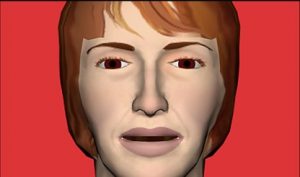
Madame I (2007)
Beverley Hood
02:01
www.eca.ed.ac.uk/profile/beverley-hood
In this work originally conceived for mobile phone, a disembodied woman’s voice contemplates a sense of detachment. Madame I was the subject of a neurological study in the early 20th century: a patient who had lost her ‘body awareness’, or proprioception. Her predicament, and her lucid, poignant description of it, resonates with the disembodied nature of our contemporary networked lives, of everyday mobile and digital technologies. Madame I is an Artist’s Film & Video production supported by The National Lottery through Scottish Arts Council and Scottish Screen.
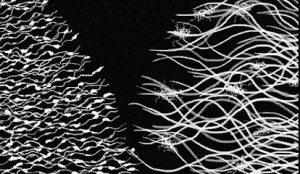
All of a Sudden Something Popped (2017)
Daksha Patel
04:15
The animation All of a Sudden Something Popped is the outcome of a residency undertaken by artist, Daksha Patel, as part of Stroke: Stories of Self, an arts/science project led by the University of Manchester and the Stroke Association. It responds to the voices of a group of people who describe sudden and profound changes in their lives that alter their perceptions and sense of identity. This intimate portrait of a group of individuals takes us on a journey through the social, psychological and physiological impact of a life-changing event.
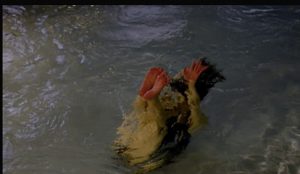
Air (verb) (2015)
Lilian Mehrel
04:00
How different is one species from the next? How can we distinguish body from mind? In Lilian Mehrel’s short film, air is expressed as a verb – to breathe / to air out. Mehrel drew her inspiration from molecular biology, water creatures, the connection between living things, and the importance of air – what goes in, and what must come out. The film raises questions around where the body ends and mind begins. Winner of the 48-hour film contest at Imagine Science Films and sponsored by Google, Columbia, Science and Nature.
IDENTITY IV
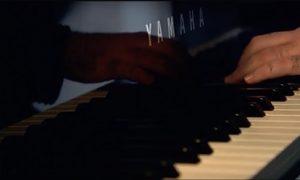
Me and My Left Hand (2017)
Wellcome Trust
02:38
Nicholas McCarthy is a highly accomplished concert pianist who was born without a right hand. Growing up, Nicholas was encouraged by his family to follow his dream of becoming a professional musician. In 2012 he became the first one-handed pianist to graduate from London’s Royal College of Music. An ambassador for OMHI, the One-Handed Musical Instrument Trust, Nicholas is a strong supporter of finding innovative methods of modifying musical instruments so that – by focusing on the positives – anyone can find their voice through music.

The Body is Obsolete (2013*)
Stelarc
04:18
In this short interview with internet art channel Vernissage TV, performance artist Stelarc discusses his practice of extending his physical capabilities through endurance, prosthetics and digital media. Working with scientists who research stem cell growth, Stelarc has the form of a human ear under the skin of his forearm. His longer-term aim is to internet enable this ear so that participants can use Stelarc’s physical body to hear his surroundings remotely from wherever they are in the world. Stelarc’s often provoking and challenging work asks us to question our reliance on the physical body.
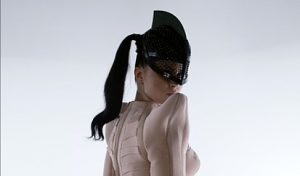
Prototype (Dance Sequence) (2014)
Viktoria Modesta
01:00
Latvian born UK singer-songwriter, Viktoria Modesta undertook a voluntary below-the-knee amputation of her left leg following years of hospitalisation throughout her childhood. This excerpt from her 2014 music video, Prototype, contains a stunning dance sequence that evocatively conveys the power of identity.
